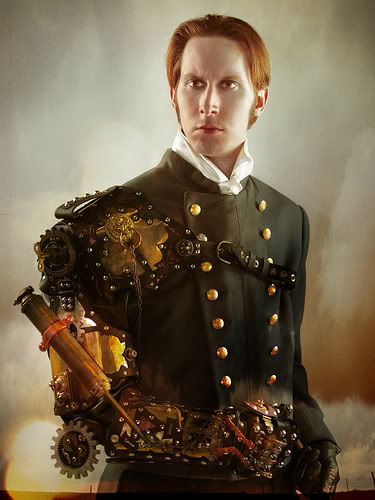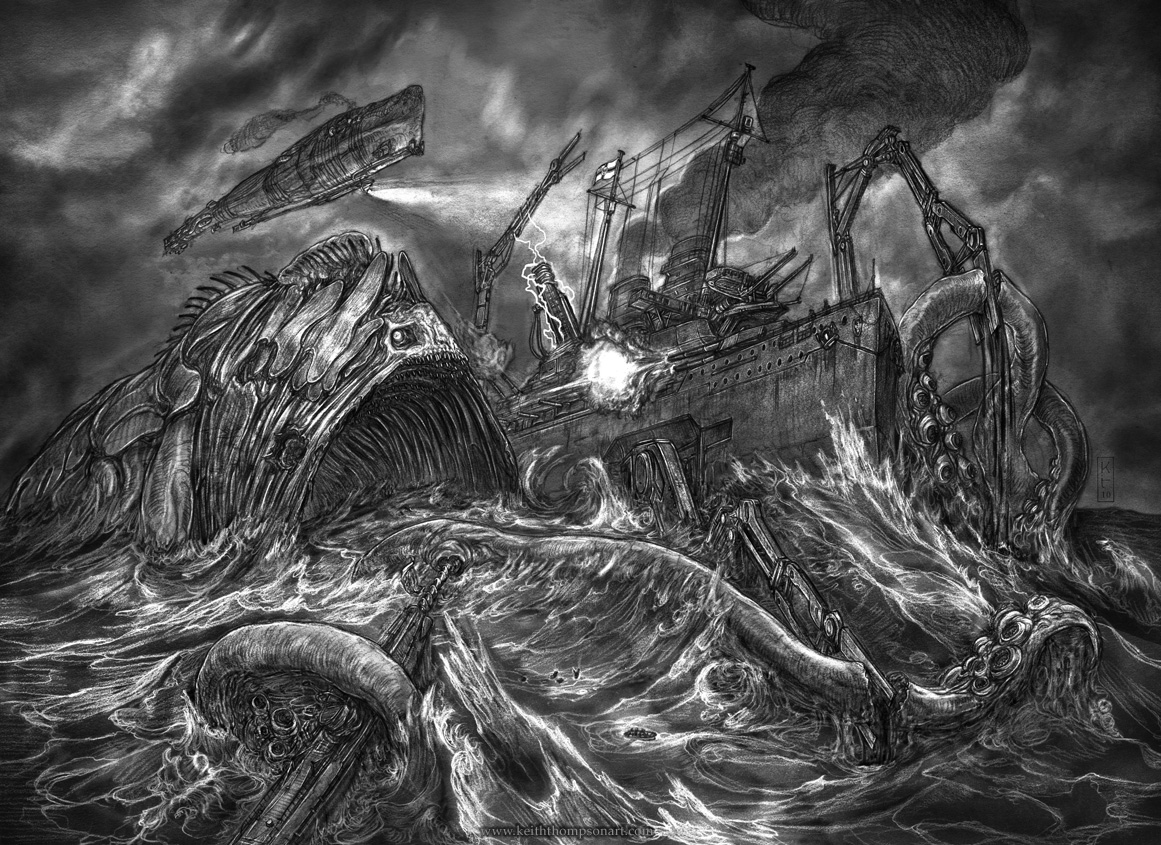 In the 80s a new science fiction literary genre emerged – cyberpunk. Cyberpunk is fiction which is high tech but low life, taking the classic dystopian themes of science fiction in a very grungy direction. This movement spawned a related social movement of those who enjoyed and engaged with the cultures so important in these works. But this article isn’t about cyberpunk, its about two different genres which came out of cyberpunk – biopunk and steampunk. These two genres are vastly different from each other – and yet there is something inescapably similar about them. Why do steam and genes go so well together?
In the 80s a new science fiction literary genre emerged – cyberpunk. Cyberpunk is fiction which is high tech but low life, taking the classic dystopian themes of science fiction in a very grungy direction. This movement spawned a related social movement of those who enjoyed and engaged with the cultures so important in these works. But this article isn’t about cyberpunk, its about two different genres which came out of cyberpunk – biopunk and steampunk. These two genres are vastly different from each other – and yet there is something inescapably similar about them. Why do steam and genes go so well together?
Biopunk is in a lot of ways a natural progression from cyberpunk, its almost entirely the same – but with a focus on biological technologies. Instead of hackers you have gene hackers, instead of cyborgs you have clones – you get the picture. In the end there is a fine line between the two and a lot of literature is distinctly hard to distinguish. Interestingly it seems biopunk has aged better than cyberpunk though. The internet came, technology became mainstream, and the hacker movement lost the romanticised gritty underworld feeling it once had. Biotechnology is just beginning its hacker movement, and its technologies still have a fundamentally visceral feel to them. It is a good time to be a biopunk.
Steampunk on the other hand has deviated significantly from its origins. Whereas cyberpunk looks at the future of today, steampunk looks at the future of the past. A better way of saying that is: steampunk is victorian era science fiction. Taking the likes of H.G. Wells and Jules Verne as inspiration, steampunk combines elements of cyberpunk aestheticism with the idea of a world dominated by clockwork, gears, and steam. Steampunk is alternative history at its best, creating the wonders of today with the technology of the past. Variations on the idea include diesel punk (circa 1930s) or even stonepunk (circa the Flintstones).
Steampunk and biopunk may seem like disparate genres, but they have come together on a number of occasions. Perhaps one of the best examples of this is the Leviathan series by Scott Westerfeld. These novels are an alternative history of WWI in a world where the main powers of the world are the Clankers and the Darwinists. Clankers represent all that is steampunk, with giant steam powered war machines the size of cities. The Darwinists on the other hand have somehow managed to advance ridiculously quickly in the art of genetic engineering – using giant genetically modified animals to help them in the war. The story follows the journey of a Darwinist airship, the Leviathan, which is essentially a giant floating whale which houses an ecosystem of other genetically modified creatures within it. The series, while aimed at young adults, is appropriate for all ages and is an amazing read.
In the Leviathan series one of the recurring themes is that despite their differences, the Clankers and the Darwinists aren’t really so different from each other. In fact they draw a lot from each other – with many Clanker machines being bioinspired, and vice versa. And it isn’t just the characters who realise that these areas complement each other – the quality of the book is a clear example of the wondrous results of such a merger. But why is it that they go together so well?
I think the real link between steampunk and biopunk comes down to their mutual reliance on a type of romanticism. Cyberpunk and biopunk share a grungy morbid style of romanticism – a longing for a dystopian world. Steampunk on the other hand is much less jaded, more often portraying utopias than dystopias – but either way it romanticises a past that never happened. What is similar in these romantacisms is the link to exciting technology which doesn’t yet exist. Cyberpunk lost its shine when we achieved the technology it imagined – and the same might happen for biopunk in the future. But for now we live in the blissful age where that hasn’t happened and as a result our imaginations are free to run wild.
I think biopunk and steampunk have a lot to contribute to our development of biotechnology into the future. Science fiction serves to inspire the technology makers of tomorrow – and there are few areas literary fields more imaginative than these. The victorian era in which steampunk is set was a time of great technological innovation and fantastic dreams about the future – it is not far off the world of today. We romanticise this past and in doing so are hopefully able to craft a brighter future.
I’ll leave you with the short film “The Mysterious Explorations of Jasper Morello”. It is yet another great example of the merging of these two disparate yet oh so similar genres, with a healthy dose of dystopian mad science.
http://www.youtube.com/watch?v=vORsKyopHyM

















